Below is a video overview of our ATM machine, watch it carefully to learn more details about ATM machine!
Watch the video above, and you will see that our ATM machine comes in various styles with unique appearance designs, stable and efficient performance, and quick, responsive operation. They offer convenient and smooth transactions, making them the ideal choice to enhance your business. Order today to take advantage of our lowest price discount on ATM machines.
| Components | Description | Specifications | Manufacturer Process Steps |
|---|---|---|---|
| Card Reader | Reads the magnetic strip or chip on a debit or credit card. | EMV compliant, Magnetic stripe reader, NFC | Assembly of card reader, integration into main unit. |
| Keypad | Allows users to input their PIN and transaction details. | 3x4 or 4x4 matrix, PCI-compliant, tactile keys | Manufacture and testing of keypad, secure integration. |
| Display Screen | Provides user interface and transaction information. | 10-15 inch, LCD/LED, touch screen or non-touch | Screen assembly, installation into ATM casing. |
| Cash Dispenser | Dispenses cash in various denominations to the user. | Multi-denomination, secure mechanism | Precision engineering, integration with ATM’s control unit. |
| Receipt Printer | Prints transaction receipts for the user. | Thermal printing, high-speed | Installation of printer module, connection to mainboard. |
| Security Enclosure | Provides physical protection for the ATM’s components. | Steel or composite material, tamper-proof | Construction of the enclosure, installation of components. |
| CPU/Mainboard | The central processing unit controlling all functions of the ATM. | High-performance processor, multiple interfaces | Assembly of the mainboard, connection to all peripheral components. |
| Power Supply | Supplies power to all the ATM components. | 110V/220V AC input, UPS support | Integration of power supply, testing for reliability. |
| Communication Modem | Connects the ATM to banking networks for transaction processing. | Ethernet, Wi-Fi, or 3G/4G | Modem configuration, secure connection to network ports. |
| Security Camera | Captures video footage for security purposes. | HD, wide-angle, night vision | Installation of camera, integration with security system. |
An ATM (Automated Teller Machine) is a self-service banking terminal that allows customers to perform a variety of financial transactions without the need for a bank teller. The primary functions of an ATM machine include withdrawing cash, checking account balances, transferring money between accounts, and depositing funds. ATMs are equipped with a secure card reader that authenticates users via their debit or credit card and a PIN keypad for secure input. The machine then communicates with the bank’s network to process the transaction in real-time. Additionally, ATMs often include a cash dispenser, receipt printer, and a display screen to guide users through the transaction process. These machines are strategically placed in convenient locations, such as banks, shopping centers, and airports, offering customers 24/7 access to essential banking services. The reliability, efficiency, and security of ATMs make them a crucial component of modern banking infrastructure, enabling quick and convenient financial transactions.

An ATM (Automated Teller Machine) is a complex integration of both hardware and software components designed to facilitate secure, efficient, and user-friendly banking transactions. The hardware of an ATM machine typically includes several key elements: a card reader, which authenticates the user’s bank card; a keypad, where users input their PINs and select transaction options; a cash dispenser, which securely stores and dispenses cash; a receipt printer that provides transaction records; and a display screen that guides users through each step of their transaction. Additional hardware components may include a camera for security monitoring, a speaker for audio instructions, and sensors to detect and manage cash levels and any tampering attempts.
On the software side, ATMs run on specialized operating systems designed for security and reliability, often tailored to the specific needs of the banking institution. The software handles user authentication, transaction processing, communication with the bank’s network, and user interface management. It also includes encryption protocols to protect sensitive information during transactions. Together, the hardware and software components of an ATM machine ensure that users can perform transactions securely, quickly, and conveniently, making them indispensable in the modern financial ecosystem.
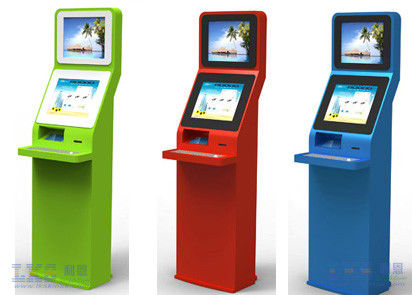
Insert Your Card: Begin by inserting your debit or credit card into the card reader slot on the ATM machine. Ensure the magnetic stripe or chip is correctly aligned.
Enter Your PIN: Once the card is accepted, the ATM will prompt you to enter your Personal Identification Number (PIN) on the keypad. Input your PIN securely and press "Enter."
Select Transaction Type: After verifying your PIN, the ATM will display a menu of transaction options such as withdrawal, deposit, balance inquiry, or fund transfer. Choose the desired transaction.
Specify Amount: If you are making a withdrawal or deposit, the ATM will ask you to enter the amount. Use the keypad to type in the amount and confirm.
Collect Cash and Receipt: For withdrawals, the ATM will dispense the requested cash. Be sure to take the cash and any printed receipt. For deposits, follow the prompts to insert cash or checks into the deposit slot.
End Transaction: Once your transaction is complete, the ATM will ask if you want to perform another transaction. If not, choose to end the session.
Retrieve Your Card: Finally, the ATM will eject your card. Take your card and any receipts, ensuring that you leave nothing behind.

| Cost Factor | Description | Price Range (USD) |
|---|---|---|
| Basic ATM Machine | Standard ATM units for basic functions like cash withdrawal and balance inquiry. | $2,000 - $4,000 |
| Advanced ATM Machine | Enhanced models with additional features such as touchscreens, check deposit, or bill payment options. | $4,000 - $7,000 |
| ATM Installation | Costs associated with the physical setup, including electrical and network wiring, and any required permits. | $500 - $2,000 |
| Software Licensing | Fees for ATM software, including operating systems and transaction processing software. | $300 - $1,000 (annual fee) |
| Cash Loading Service | Charges for third-party services that load cash into the ATM. | $50 - $200 per service call |
| Maintenance and Support | Ongoing costs for routine maintenance, repairs, and customer support services. | $50 - $300 per month |
| Wireless Connectivity | Monthly fees for wireless communication services if the ATM is connected via cellular networks. | $20 - $50 per month |
| Compliance and Security Upgrades | Costs for regular updates to meet regulatory requirements and security standards (e.g., PCI compliance). | $200 - $1,000 annually |
| Transaction Fees | Charges per transaction, typically paid to the ATM network or processor. | $0.10 - $0.25 per transaction |
| Additional Features | Optional upgrades like card readers, biometric scanners, or custom branding. | $500 - $2,000 |
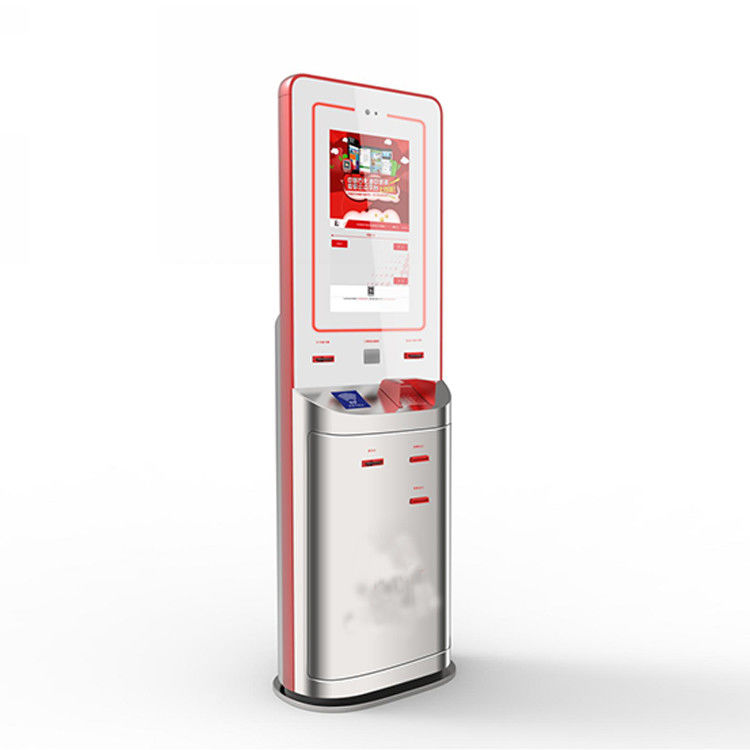
Purchasing an ATM machine involves several critical steps to ensure that you choose the right model, vendor, and services to meet your business needs. Below is a brief guide, along with a six-step checklist to help streamline the purchasing process.
Assess Your Needs: Determine the specific requirements of your business, including the expected transaction volume, preferred features (e.g., cash dispensing, deposit options), and location placement.
Research Vendors: Look for reputable ATM machine vendors or manufacturers. Consider their product range, pricing, customer reviews, and after-sales support.
Compare Models: Evaluate different ATM models based on their features, software capabilities, hardware reliability, and user interface.
Understand Costs: Calculate the total cost of ownership, including the price of the machine, installation fees, software licensing, maintenance, and transaction fees.
Check Compliance: Ensure that the ATM meets regulatory and security standards, such as PCI compliance. Verify that the machine is equipped with the latest security features.
Negotiate Terms: Finalize the purchase by negotiating the price, service contract, and any additional terms with the vendor. Be sure to include provisions for maintenance and technical support.
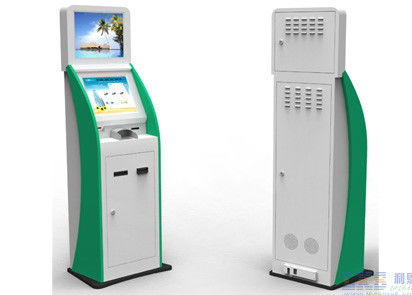
Yes, you can use a credit card at an ATM machine, but it's typically for cash advances rather than standard purchases. A cash advance allows you to withdraw cash from your credit card account up to a certain limit, but it usually comes with higher fees and interest rates compared to regular credit card purchases. To use your credit card at an ATM, you’ll need to insert the card into the machine, enter your PIN (which must be set up beforehand), and select the option for a cash advance. Keep in mind that interest on a cash advance starts accruing immediately, unlike regular credit card transactions where you might have a grace period. Additionally, the ATM might charge a fee for the transaction, and your credit card issuer could also impose its own cash advance fees, typically a percentage of the amount withdrawn. It's generally advisable to use this option only in emergencies due to the higher costs associated with it.
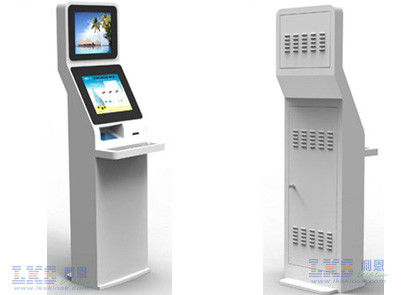
On average, ATM surcharge fees range from $2.50 to $3.00 per transaction. Assuming an average of 6 daily transactions, you could earn $15 to $18 daily, or $450 to $540 monthly, from a single ATM machine.
automated teller machine, An automated teller machine (ATM) is an electronic banking outlet that allows customers to complete basic transactions without the aid of a branch representative or teller.
Owning and maintaining ATMs is a way many people earn a living and create additional or passive income streams. Are you looking to buy an ATM Machine, place ATM Machines or start an ATM business? We have all the top selling ATM machines for sale and can help you out in a selection of an ATM machine!
Who loads the cash in the machine? As the owner of the ATM machine you are responsible for loading cash in the machine or having a 3rd party load cash into the machine. This cash is also paid back on a daily basis as customers pull cash from the ATM and deposited back into a bank account of your choosing.
You need to open a bank account. You need to establish a Legal entity firm or Sole Proprietorship Firm. You need to reach out to companies and look at the requirements who are offering White Label ATM Services. Generally, Non-Banking Financing companies like Tata Indicash, Muthoot Finance operate the ATM kiosk.
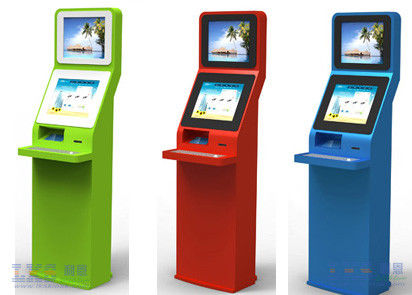
| Category | Details |
|---|---|
Types of ATM machine | 1. Lobby ATMs: Installed indoors in bank branches, malls, or retail outlets. 2. Through-the-Wall ATMs: Installed outside with access from both sides. 3. Drive-Thru ATMs: Accessible by car, often found in bank drive-thru lanes. 4. Standalone ATMs: Placed in convenience stores or gas stations, not attached to a bank branch. 5. Smart ATMs: Provide additional services like bill payments and mobile top-ups. |
Sizes of ATM machine | 1. Compact ATMs: Smaller, space-saving models for tight locations (e.g., convenience stores). 2. Standard ATMs: Typical size, used in most locations (e.g., lobbies, through-the-wall). 3. Large ATMs: Larger units with more features, like advanced screens, ideal for high-traffic areas. |
ATM machine Design | 1. Traditional Design: Classic look, often boxy with standard buttons and screen. 2. Modern Design: Sleeker, more ergonomic, with touchscreens and interactive interfaces. 3. Custom Design: Tailored to match the branding and aesthetic of the location, with custom colors, logos, and graphics. |
Customization options of ATM machine | 1. Branding: Custom colors, logos, and graphics to match your business identity. 2. Interface: Customized user interface, language options, and service offerings. 3. Features: Additional functionalities like touch screens, biometric scanners, and voice assistance. 4. Security: Enhanced security features like reinforced enclosures, cameras, and alarms. |
Price Range of ATM machine | 1. Basic ATMs: $2,000 - $5,000, generally compact, with limited features. 2. Mid-Range ATMs: $5,000 - $10,000, offer more features and customization. 3. High-End ATMs: $10,000 - $20,000 or more, fully customizable with advanced features. |
Assess Your Needs: Determine the specific requirements for your ATM, such as transaction volume, the type of transactions (cash withdrawals, deposits, etc.), and any additional features like touchscreen displays or receipt printers.
Choose the ATM Type: Decide on the type of ATM that best fits your location and business needs, such as a lobby ATM, through-the-wall ATM, or drive-thru ATM. Each type offers different benefits depending on space and customer accessibility.
Research Manufacturers and Suppliers: Look for reputable manufacturers and suppliers who offer reliable machines, customization options, and positive customer feedback. Ensure they have experience in the industry and can provide support.
Compare Prices and Features: Collect quotes from multiple vendors and compare the prices, features, and service agreements. Consider the total cost of ownership, including initial purchase, installation, maintenance, and any potential software upgrades.
Check Compliance and Security: Ensure the ATM complies with local regulations, such as ADA (Americans with Disabilities Act) requirements, and includes essential security features like anti-skimming devices, encrypted PIN pads, and surveillance options.
Finalize the Purchase and Setup: After selecting the right ATM and supplier, finalize the purchase agreement. Arrange for the proper installation, setup, and training on how to operate the machine, ensuring everything is ready for seamless integration into your business.
Location and Accessibility: Consider the placement of the ATM, whether it will be indoor or outdoor, and how accessible it will be to customers. The location impacts foot traffic, security, and the type of ATM you need.
Security Features: Ensure the ATM has robust security features such as anti-skimming devices, encrypted PIN pads, cameras, and secure cash management. This is critical for protecting both the machine and users.
Compliance and Regulations: Verify that the ATM complies with all local laws and regulations, including those related to accessibility (like ADA compliance in the U.S.), and any banking or financial regulations that may apply.
Maintenance and Support: Consider the maintenance requirements and availability of technical support. Look for a supplier that offers reliable after-sales service, regular updates, and a clear warranty policy.
Customization and Upgrades: Think about your future needs and whether the ATM can be customized or upgraded over time. This includes software updates, hardware enhancements, or the ability to add new features.
Cost of Ownership: Evaluate the total cost of ownership, which includes the purchase price, installation, ongoing maintenance, transaction fees, and potential repair costs. Balance this against the expected return on investment.
What did our happy clients say?
I’m thoroughly impressed with the quality of our new ATM machine. It’s sleek, user-friendly, and incredibly reliable. The customer service was top-notch from start to finish. I highly recommend this manufacturer for their excellent products and support!
We couldn’t be happier with our ATM purchase. The machine operates flawlessly, with impressive speed and accuracy. The manufacturer provided outstanding service, guiding us through every step. Highly recommend them for their exceptional quality and dedication.
Our new ATM machine has exceeded all expectations! The build quality is robust, and it performs seamlessly. The support team was incredibly helpful and responsive. I would definitely recommend this manufacturer to anyone in the market for a reliable ATM.
This ATM machine is fantastic! The quality is superb, and it has quickly become a valuable asset to our business. The manufacturer’s service was exemplary, ensuring a smooth purchase and installation process. I highly recommend them for their superior products and service.